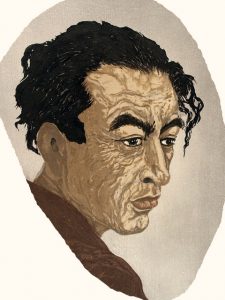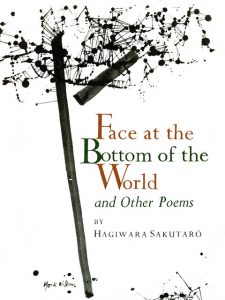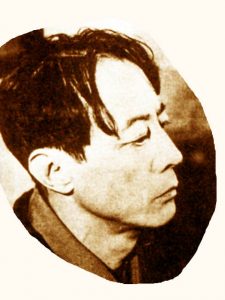



With his book of poems, in 1917, he started a new poetic language in which poetry took concrete form in the words themselves. In some of his poems, he even criticized the suffocation of individuality by group life. More than just a poet, the Japanese Hagiwara Sakutarō https://allpoetry.com/Sakutaro-Hagiwara can be consider as the founder of free verse in his country. Born in Maebashi in 1886, he spent a golden childhood, which allowed him to present his poems to public attention at the age of 15. Now, you can read one of his short poem, CHAIR – The person sleeping under the chair, is he the children of the person who made the grand house?

In publishing a collection of aphorisms, he even tried to express his very personal sensual philosophy. Hagiwara Sakutarō https://granta.com/three-poems-hagiwara/ refused to become a doctor like his father, therefore, in Tokyo he preferred to devote himself to the study of mandolin and guitar. In 1919, his family arranged for him an unfortunate marriage from which he had two daughters before being abandon by his wife. As a writer of free verse, he stayed outside the traditional rules and published essays, literary criticism and aphorisms, with his own style of verse imbued with existential doubts, boredom and confused fears.

SPRING NIGHT – Things like littlenecks, things like quahogs, things like water-fleas, these organisms, bodies buried in sand, out of nowhere, hands like silk threads innumerably grow, hands’ slender hairs move as the waves do. A pity, on this lukewarm spring night, purling the brine flows, over the organisms water flows, even the tongues of clams, flickering, looking sad, as I look around at the distant beach, along the wet beach path, a row of invalids, bodies below their waists missing, is walking, walking unsteadily. Ah, over the hair of those human beings as well, passes the spring night haze, all over, deeply, rolling, rolling in, this white row of waves is ripples.
The financial support of his father allowed Hagiwara Sakutarō https://bungo.fandom.com/wiki/Hagiwara_Sakutarou to develop gradually his own poetic style; in fact, he abandoned the classical schemes to devote himself to compositional poetic freedom. Extremely fascinated by the darkest of expressive intimacies, he neglected any nuance oriented to the quality of things destined to perish. With his exploration of vulgarity and using the vernacular, he revolutionized Japanese poetry of the 20th century. One of his mental tricks allowed him to write poems with an illusory internal realism. By language for writing, he referred to the style used in writing, as opposed to spoken language.
ROTTEN CLAM – Body half-buried in sand, still it is lolling its tongue. Over this invertebrate’s head, pebbles and brine rustle, rustle, rustle, rustle, flowing, flowing, ah as quietly as a dream flowing. From between the sand and sand that go on flowing, the clam again has its lolling tongue flicker and flare red, this clam is very emaciated, I am saying. Look, its rubbery entrails seem about to rot, and so when sad-looking evening comes, sitting on the pale beach, flickering, flickering, it lets out rotten breaths, I tell you.
Together with the poet Murō Saisei, in 1916 he founded a literary magazine and the following year Hagiwara Sakutarō https://www.britannica.com/biography/Hagiwara-Sakutaro edited Screaming at the moon, his first book of poems. A sad man and thirsty for affection, with his 1923 Blue Cat he presented himself to a wider audience with a style that was difficult to understand, but which was appreciated by the novelist Mori Ōgai. In 1934, he edited The ice Island, his latest collection of free verses that explored the hypothetical reasons that alienated him from a wider audience. After months of acute pneumonia, he died in a 1942 May day. In his native Maebashi, you too can visit his grave at the temple of Jujun-ji.
If you want to know writers, you can type http://meetingbenches.com/category/library/, while for poets around the world http://meetingbenches.com/category/poetry/. The sole purpose of this site is to spread the knowledge of these artists and that other people enjoy their works. The property of the images that appear in this blog correspond to their authors.
Identity as a poem in continuous evolution Identification is never a final destination, but a…
The spark that triggers a path of introspection and inner transformation The title “ASTONISHMENT” immediately…
Reflections on waiting and the transformative winds that push you forward Minimalist poetry, with its…
If you don't know sadness, you can't have deep thoughts Depth is a multifaceted concept…
James Hamilton-Paterson: When life is a Pilgrimage His early work reflects a youthful optimism and…
Amadeo de Souza-Cardoso: synthesis of the pictorial currents of the early twentieth century "Amadeo de…
This website uses cookies.